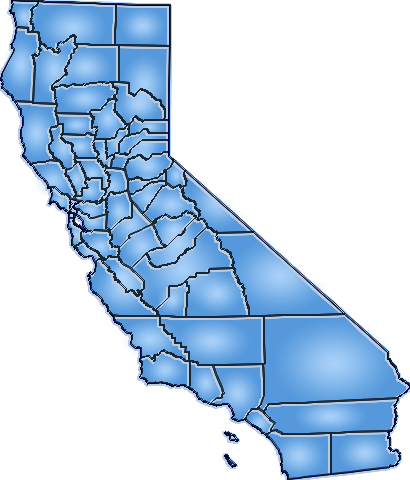San Joaquin County vs. California Comparative Trends Analysis: Population Growth and Change, 1969-2022 Introduction  San Joaquin County: 2022 Population = 793,229 2022 Percent of State = 2.03% California: 2022 Population = 39,029,342 2022 Percent of U.S. = 11.71% Attracting and retaining people to live, work, raise a family, and retire underlies the economic vitality of any region. Population growth is both a cause--and a consequence--of economic growth. Patterns of population growth and change reflect differences among regions to attract and retain people both as producers and consumers in their economy. The following graphs offer a broad overview of trends in the pattern of population growth and change of San Joaquin County with comparisons to California and the nation at large. This analysis features alternative approaches toward discussing, diagnosing and comparing San Joaquin County vs. California's population growth over 1969-2022. The data used are those compiled by the Regional Income and Product Divisions of the Bureau of Economic Analysis, U.S. Department of Commerce. Population, 1969-2022  Figure 1. Figure 1 traces San Joaquin County's annual population for the period 1969-2022 to illustrate population patterns over time. During this 54-year period, San Joaquin County's population rose from 284,769 in 1969 to 793,229 in 2022, for a net gain of 508,460, or 178.55%. NOTE: The county and state population totals reported by the Bureau of Economic Analysis (BEA) are from the Bureau of Census midyear (July 1) estimates. These estimates may differ from those prepared independently in some states by various agencies and/or universities. Population, 1969-2022  Figure 2. Figure 2 traces California's annual population for the period 1969-2022 to illustrate population patterns over time. During this 54-year period, California's population rose from 19,711,000 in 1969 to 39,029,342 in 2022, for a net gain of 19,318,342, or 98.01%. NOTE: The county and state population totals reported by the Bureau of Economic Analysis (BEA) are from the Bureau of Census midyear (July 1) estimates. These estimates may differ from those prepared independently in some states by various agencies and/or universities. Population Indices (1969=100): 1969-2022  Figure 3. Figure 3 portrays San Joaquin County's population growth in a broader context by offering direct comparisons across time with California, the United States. The growth indices shown here express each region's population in 1969 as a base figure of 100, and the populations in later years as a percentage of the 1969 base figure. This method allows for more direct comparison of differences in population growth between regions that may differ vastly in size. San Joaquin County's overall population growth was 178.55% over 1969-2022 outpaced California's increase of 98.01%, and topped the United States' increase of 65.57%. Population as a Percent of the California Total: 1969-2022  Figure 4. Another interesting and insightful way of contrasting the population growth of San Joaquin County is to compare its individual percentage contributions to California's statewide population over time, as shown in Figure 4. A rising share means a region's population grew faster, or declined less, than California's population, while a declining share shows it grew more slowly. In 1969, San Joaquin County's population totaled 1.44% of California's population, while in 2022 it comprised 2.03% thereby yielding a +0.59% share-shift.
San Joaquin County Population: Annual Percent Change, 1970-2022  Figure 5. Figure 5 displays the short-run pattern of San Joaquin County's population growth by tracking the year-to-year percent change over 1970-2022. The average annual percent change for the entire 53-year period is also traced on this chart to provide a benchmark for gauging periods of relative high--and relative low--growth against the backdrop of the long-term average. On average, San Joaquin County's population grew at an annual rate of 1.96% over 1970-2022. The county posted its highest growth in 1985 (4.34%) and posted its lowest growth in 2013 (0.50%). In 2022, San Joaquin County's population grew by 0.65% San Joaquin County Population: Annual Percent Change and Decade Averages Over 1970-2022  Figure 6. Over the past five decades some counties have experienced extreme swings in growth, and often such swings have tended to coincide with the decades themselves. Figure 6 again traces the annual percent change in San Joaquin County's population since 1970, but this time they are displayed with average growth rates for the decade of the 1970s, 1980s, 1990s, 2000s, 2010s, and 2020-2022. During the 1970s, San Joaquin County's annual population growth rate averaged 1.74%. It averaged 3.27% throughout the 1980s, 1.70% throughout the 1990s, 2.07% throughout the 2000s, 1.32% throughout the 2010s, 0.88% thus far this decade (2020-2022). Population Growth: Average Annual Percent Change by Decade  Figure 7. Figure 7 compares the decade average growth rates for San Joaquin County noted in the previous graph with the corresponding decade averages for California and the nation. As the chart reveals, San Joaquin County's average annual population growth surpassed California's average throughout the 1970s (1.74% vs. 1.67%), outpaced California's average during the 1980s (3.27% vs. 2.31%), outgained California's average during the 1990s (1.70% vs. 1.38%), outgained California's average throughout the 2000s (2.07% vs. 0.99%), exceeded California's average throughout the 2010s (1.32% vs. 0.68%), and topped California's average over the 3 year period of the current decade, 2020-2022 (0.88% vs. -0.44%). Finally, relative to nationwide population growth trends, San Joaquin County registered above the nation during the 1970s (1.74% vs. 1.10%), outgained the nation over the 1980s (3.27% vs. 0.95%), outperformed the nation over the 1990s (1.70% vs. 1.23%), outgained the nation in the 2000s (2.07% vs. 0.95%), surpassed the nation over the 2010s (1.32% vs. 0.74%), and led the nation over 2020-2022 (0.88% vs. 0.31%).
| Analysis Options Menu | ||||||||||||||||||||||||||||||||||||||||||||||||||||||||||||||||||||||||||||||||||||||||||||||||||||||||||||||||||||||||||||||||||||||||||||||||||||||||||||||||||||||||||||||||||||||||||||||||||||||||||||||||||||||||||||||||||||||||||||||||||||||||||||||||||||||||||||||||||||||||||||||||||||||||||||||||||||||||||||||||||||||||||||||||||||||||||||||||||||||||||||||||||||||||||||||||||||||||||||||||||||||||||||||||||||||||||||||||||||||||||||||||||||||||||||||||||||||||||||||||||||||||||||||||||||||||||||||||||||||||||||||||||||||||||||||||||||||||||||||||||||||||||||||||||||||||||||||||||||||||||||||||||||||||||||||||||||||||||||||||||||||||||||||||||||||||||||||||||||||||||||||||||||||||||||||||||||||||||||||||||||||||||||||||||||||||||||||||||||||||||||||||||||||||||||||||||||||||||||||||||||||||||||||||||||||||||||||||||||||||||||||||||||||||||||||||||||||||||||||||||||||||||||||||||||||||||||||||||||||||||||||||||||||||||||||||||||||||||||||||||||||||||||||||||||||||||||||||||||||

